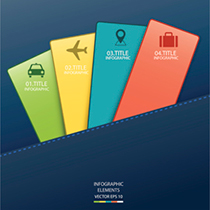By Leah A. Murray
Abstract
Barbara Jacoby and Associates. (2009). B. Jacoby, ed. Civic engagement in higher education: Concepts and practices. San Francisco, CA: John Wiley & Sons, Inc.
According to an Association of American Colleges and Universities monograph, “Five High-Impact Practices,” there are four essential learning outcomes for college students. They are knowledge of human cultures and the physical and natural world, intellectual and practical skills, personal and social responsibility, and integrative and applied learning (Brownell & Swaner, 2010, p. ix). The use of high impact practices in the classroom can significantly increase student learning in these areas, if done well. Service-learning is listed as one highimpact practice with excellent results. At the same time that higher education has begun to think about its pedagogy in a more intentional way over the last few decades, colleges and universities have also been called to “revitalize [their] civic mission” (Jacoby et al., 2009, p. 1). Only one of the high impact practices can do both the work in the classroom as a pedagogical tool to help students increase their capacity along the essential learning outcome spectrum and also the work to revitalize the “civic mission” (p. 1) of the university. This is a pedagogical practice whose time has come. This edited volume makes two major contributions to the understanding of this pedagogical practice. First, its authors seek to tackle the epistemological problem of defining civic engagement. Is civic engagement the same as servicelearning or is it something more? If it is something more, does it do better meeting the needs for learning outcomes that service-learning as a high-impact practice does? Second, its authors’ demonstrate through case studies varied approaches to how to best conduct the work. One problem with civic engagement as a pedagogical practice has been its definition. Although there seems to be a moment here when civic engagement can meet the pressing needs of both students and of the university, there is the issue that it is unclear what civic engagement is. The AACU monograph cites servicelearning specifically, but mentions civic engagement as an outcome (Brownell & Swaner, 2010, 29). The editors of this volume tackle the definitional problem in a thorough literature review demonstrating the use of terms that oftentimes are interchangeable. They struggle with the question whether “community service and civic engagement are the same thing” (Jacoby et al., 2009, p. 7). Jacoby et al. define civic engagement as “educating students to become civically engaged citizens, scholars, and leaders” (p. 7). They argue their definition is an adaptation of the Coalition for Civic Engagement and Leadership’s 2005 definition that civic engagement is “acting upon a heightened sense of responsibility to one’s communities” (as cited in Jacoby et al., 2009, p. 9). In this way, they support a “most common and most inclusive term” (Jacoby et al., 2009, p. 9) which offers a “big tent” that allows individuals and initiatives representing a range of perspectives to gather beneath it for the purpose of creating a cohesive whole that advances responsibility for the common good” (p.10). This de-centralized definition allows all universities to find in it what works best for themselves but also keeping the focus on “responsibility for the common good.” Once establishing the working definition of civic engagement, the volume then examines what we know about civic engagement writ large. First, contributors Lopez and Kiesa prove that college programs geared toward increasing a “responsibility for the common good” have a positive correlation between college attendance and civic engagement and that it is not just the result of a “civic creaming” effect (Jacoby et al., 2009, p. 32). This means the pedagogical approach is working and not just the desire of some faculty in higher education to do good work. They also prove that students desire engagement opportunities including “volunteer, political, and deliberation” (p. 43) thus demonstrating that a “big tent” definition is the most appropriate to the work. Secondly, contributors add to our understanding of the definitional puzzle by demonstrating that students in high school, who could articulate the need to provide service, did not know what the concept civic engagement meant or how civic engagement connected to democratic institutions (p. 49). These contributors note that the problem is generally that the various definitions of civic engagement happening in different locations on campuses makes it hard to capitalize on the work being done. However, recent efforts have shown that working more intentionally on civic engagement “promises to provide students with the knowledge, commitment, and practical skills to be socially responsible citizens” (p. 57). Loose definitions of civic engagement in a more intentional dialogue across campuses can result in more success along the learning outcomes AACU highlighted. Regardless of the definition or where on campus the work is being done, it is most important that practitioners of the pedagogy do it well. The rest of Civic Engagement In Higher Education: Concepts and Practices is dedicated to highlighting best practices in civic engagement pedagogy. Many pathways of civic engagement in campus life are provided from general education to capstone experiences to undergraduate research. Most of the five high-impact practices identified by the AACU monograph are examined. For example, there is currently a drive toward thinking about making general education mean something more for students. Given the call for higher education to “revitalize its civic mission,” there is no better place for civic engagement pedagogy than general education. One chapter articulates a model of how to do civic engagement at the general education level and even provides a toolkit. Practitioners can get ideas for how best to do the work of civic engagement in every chapter of this book. This book allows civic engagement stakeholders in higher education to grapple with the diaspora that occurs on campus with a focused definition that is both precise and inclusive. The working definition offered can inform many conversations about civic engagement nationally. Secondly, any location on campus that civic engagement is happening can sink its teeth into one of the pedagogical tools provided. I concur with the argument of the book that the purpose of higher education is a civic one and that civic engagement pedagogy can get us closer to fulfilling our purpose than perhaps any other high-impact practice.



